Real garden: explore this colourful, peaceful town garden
Creating a calm and lush garden oasis in the centre of a busy town has been a labour of love for Eithne Hudson over the past 30 years
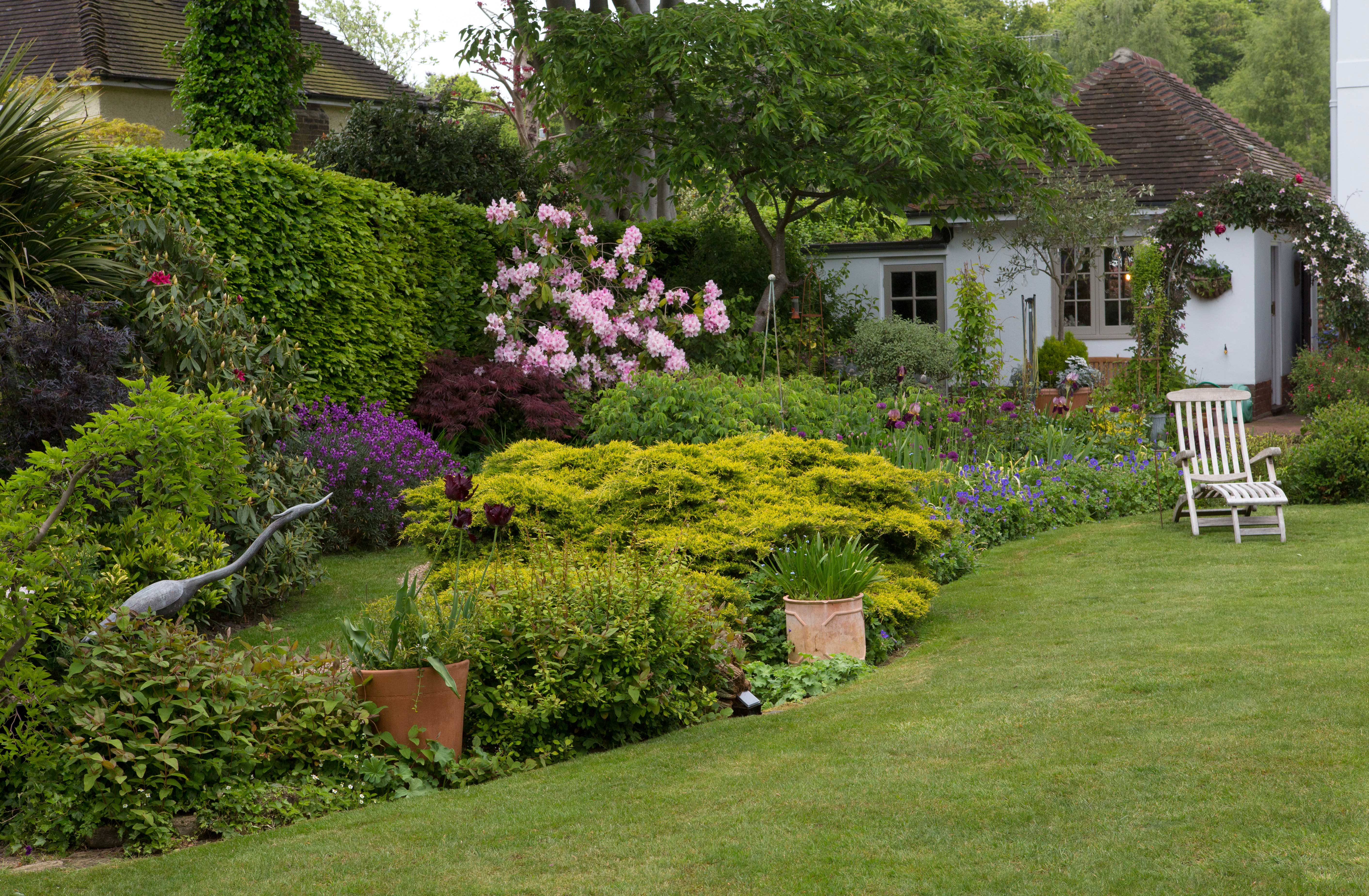
When Eithne Hudson and her young family moved from a new build in Essex, with a garden set on river clay, to their 1927 town villa in Tunbridge Wells, Kent, built on a former grazing common on sandstone, it was a complete change in many ways.
Read on to find out how Eithne transformed her plot, and find more real homes and gardens on our dedicated page. For more garden ideas, don't miss our dedicated page.
- Find more inspiration on creating your own traditional garden design with our helpful guide
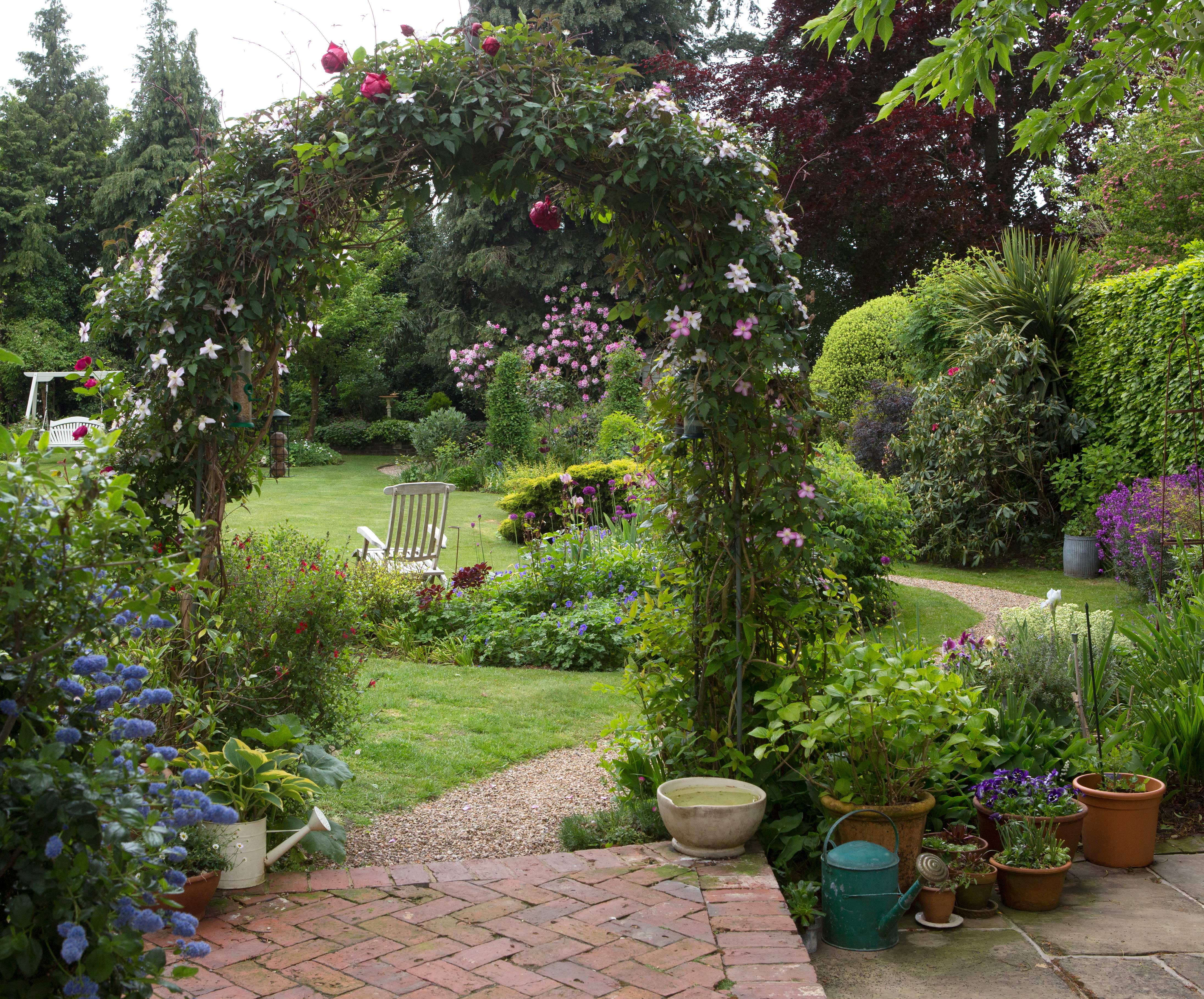
Eithne has created pretty vignettes and views as here, through the arch, splashed with deeper pink Clematis ‘Elizabeth’, which frames the beginning of the path that winds down the garden. Groups of eclectic containers, such as a hosta in a watering can, and harmonious hues complete the scene
‘We had never had a house that needed work; this one was on a much larger scale and I remember how our dining table looked like a coffee table in the dining room. The house was solidly and beautifully built – the survey read like Gone with the Wind – and we were only the fourth family to have lived here. It took us 17 years to get it as we wanted; it was a labour of love,’ explains Eithne.

Eithne’s floristry studio is full of cut foliage, flowers and decorative items, but still has space for the workshops she holds
From the start, however, it was the garden that was the main attraction for her. ‘It had originally been professionally landscaped in the 1960s, with a rockery and crazy paving of the time, but when we arrived in 1986 it had become tired, neglected and overgrown, with the lawn full of daisies. I could see the children playing in the garden and loved the feel of the house, but we wondered how we were going to get to grips with it all,’ Eithne admits.
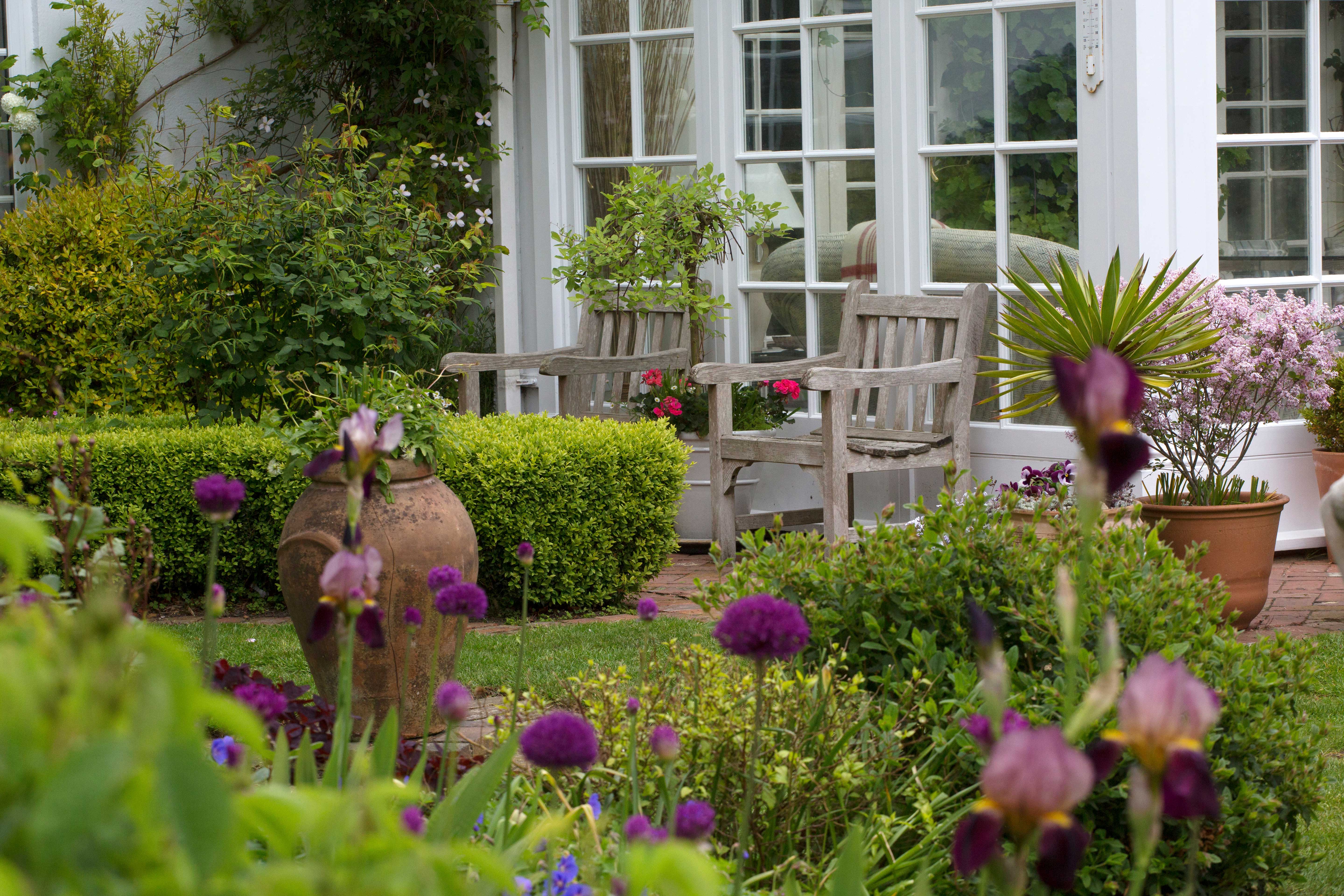
A pair of teak chairs are placed in a sunny spot, and attractive pots of salix underplanted with bright pelargoniums and a dainty pink Syringa ‘Red Pixie’, compact lilac, draw the eye
The area had originally been part of the common and the street was developed with imposing houses from 1927, the first one theirs, with its French-style shutters and elegant stature. Set on a quarter-acre plot, the garden spread out mainly from the back of the house and had great potential.
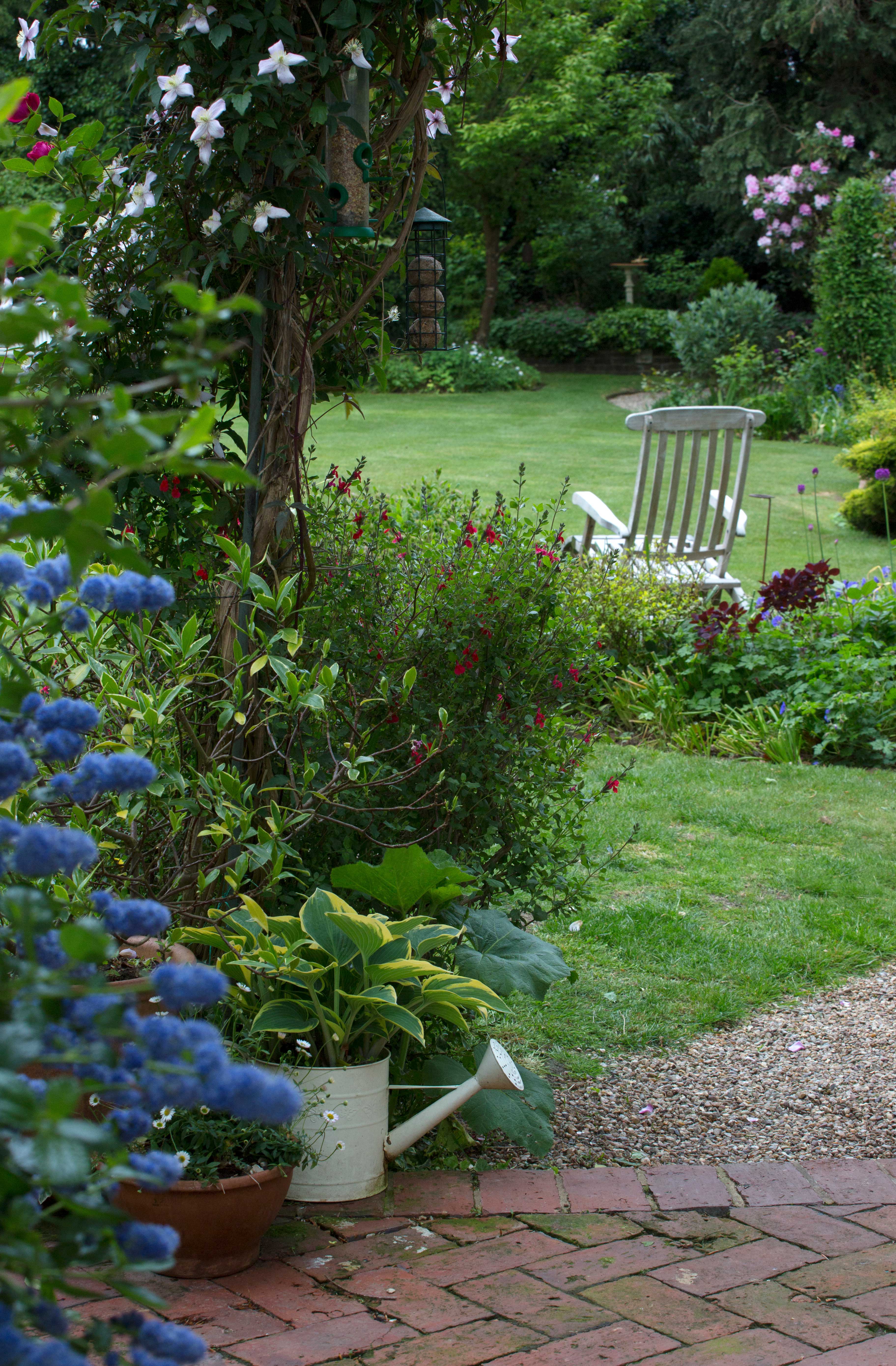
‘I remember the delight in putting the spade so easily into the sandy soil here. Being very acidic, it has also given me the opportunity to grow different plants, such as rhododendrons, magnolias and camellias. My priority was the garden, and I worked tirelessly on it. It has just evolved over the years,’ says Eithne.
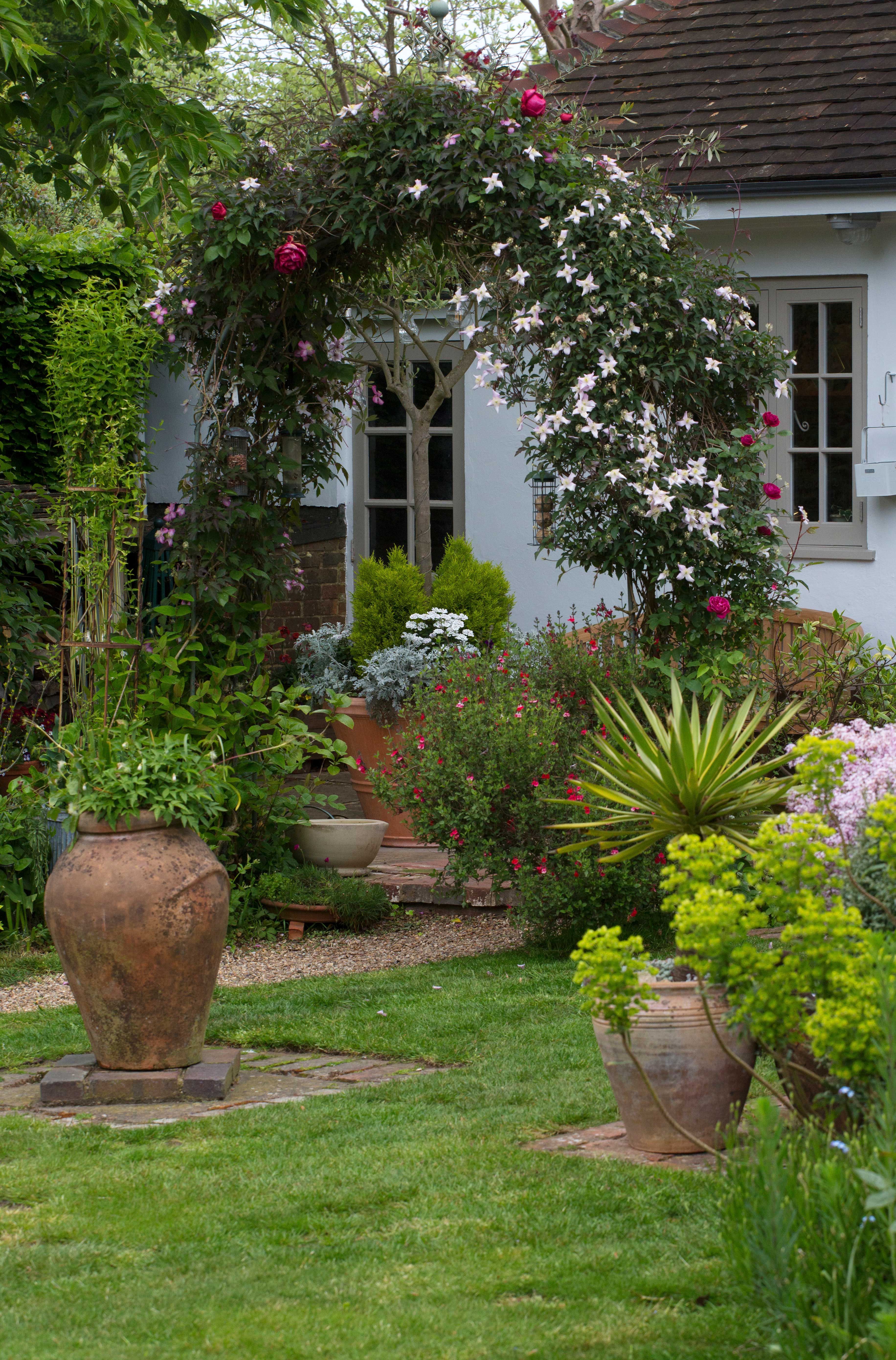
Although she wanted to create year-round colour, this was, she explains, a struggle ‘as it’s very much a spring garden. Roses, for instance, are a challenge on this soil, and I need to add plenty of manure and feed them. Tough rugosa roses do best, and I love David Austin roses, such as ‘Gertrude Jekyll’ and ‘Charles de Mills’. I have given up on large-flowered clematis but montana do well.’
Get small space home decor ideas, celeb inspiration, DIY tips and more, straight to your inbox!
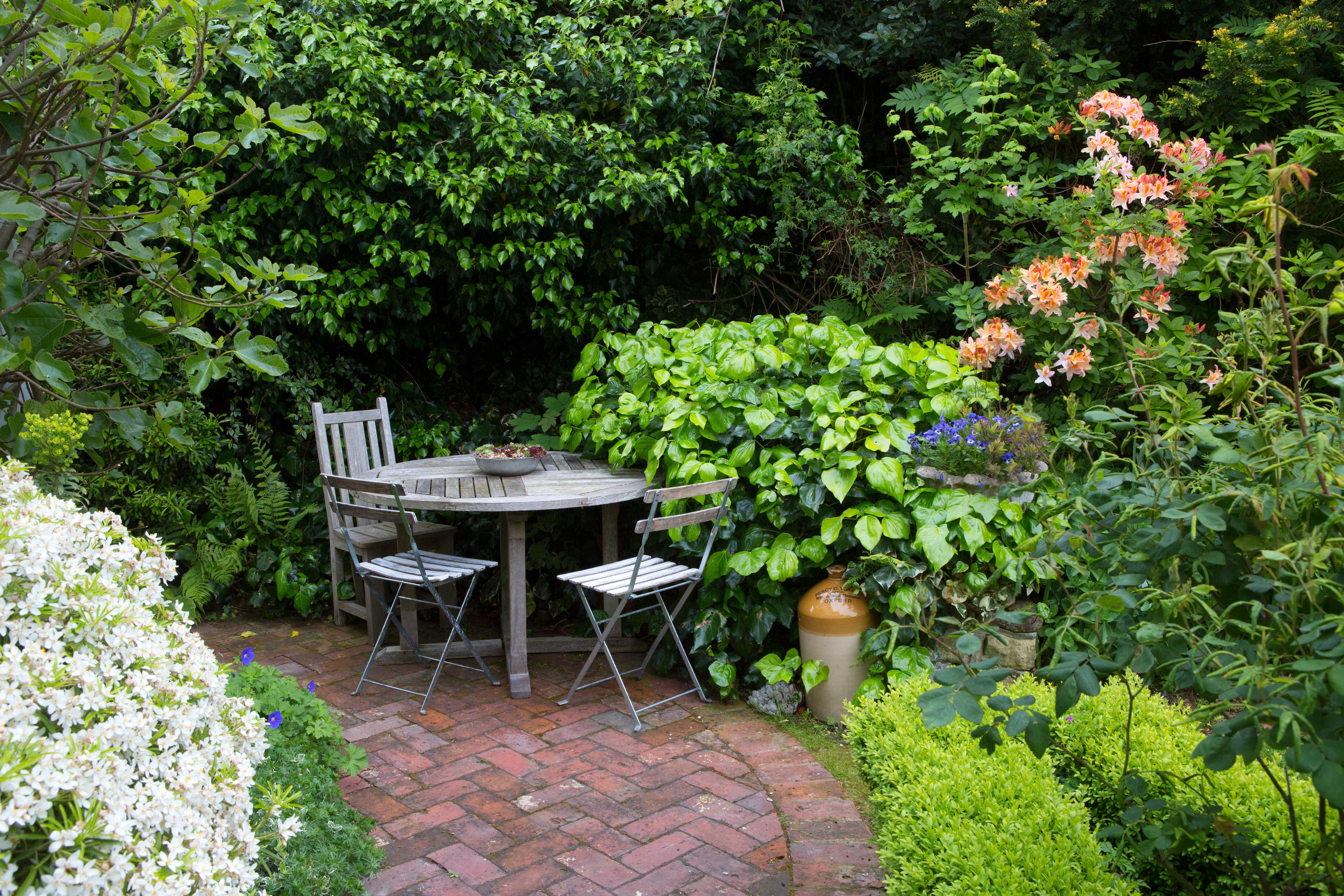
Ivies are one of her favourites and a variety of types have been used attractively in this shady corner – adding a splash of spring colour is the orange Azalea ‘Glowing Embers’, which also contrasts well with the deep blue violas in the urn
A nursery school teacher for 40 years, but always a keen gardener from childhood, Eithne’s interest in plants and flowers led her to retrain as a florist through The Sussex Flower School. Planting has since been partially dictated in this direction, with foliage plants a focus for use in her floristry work. ‘I love ivies, have lots of varieties and even call my business Ivy & Twine,’ she adds.
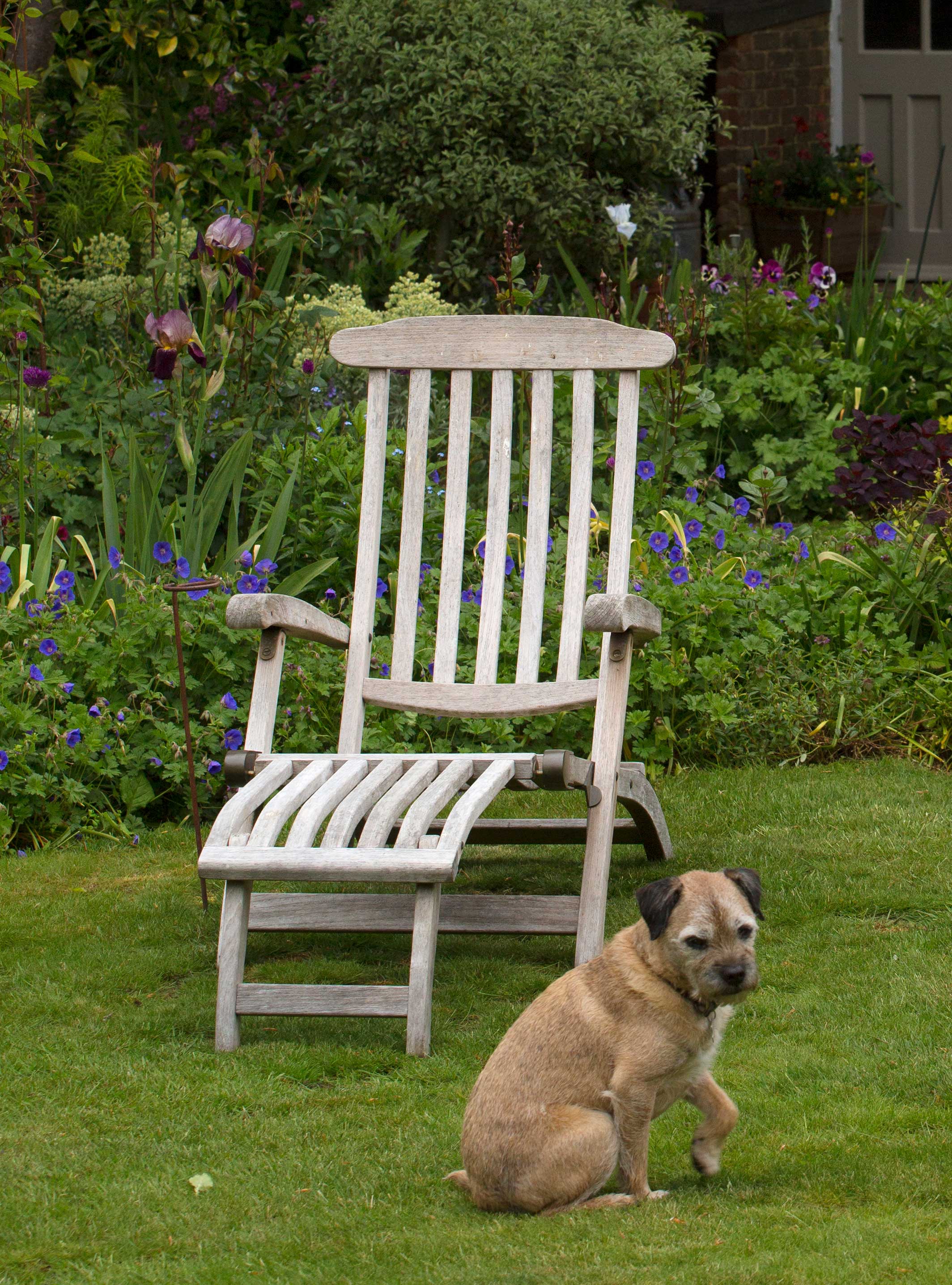
Nearer to the house, the slightly sloping, south-facing garden can get the full brunt of the sun, but as you venture down the garden, with its sweeping lawn and well-stocked beds, it becomes more naturalistic and shaded by mature trees. Existing beds have been extended and replanted, while others have been created over the years.
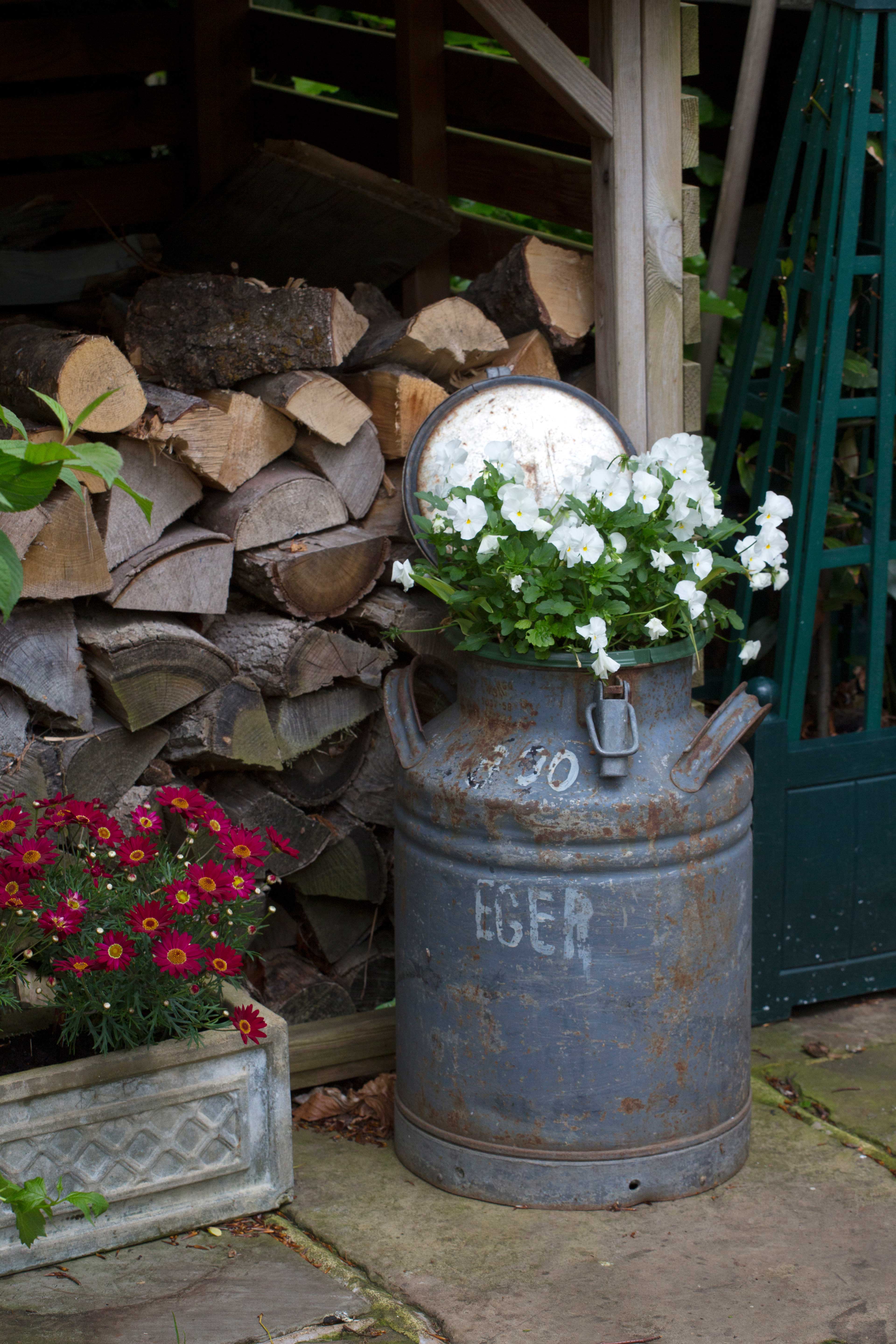
A rockery dominates the highest side, a known frost pocket; an existing small goldfish pond is adorned with lush foliage; a summerhouse and wooden swing seat beckon you to stop awhile; scented climbers scramble over arches and obelisks, and the whole garden has a calm and charming atmosphere.
Island beds hold billowing combinations of roses, mixed annuals and perennials. In May, spheres of Allium ‘Purple Sensation’ and harmonious irises stand above tumbling geraniums and prolific nepeta, while pink rhododendrons are interspersed among evergreen boundary hedging of different hues.
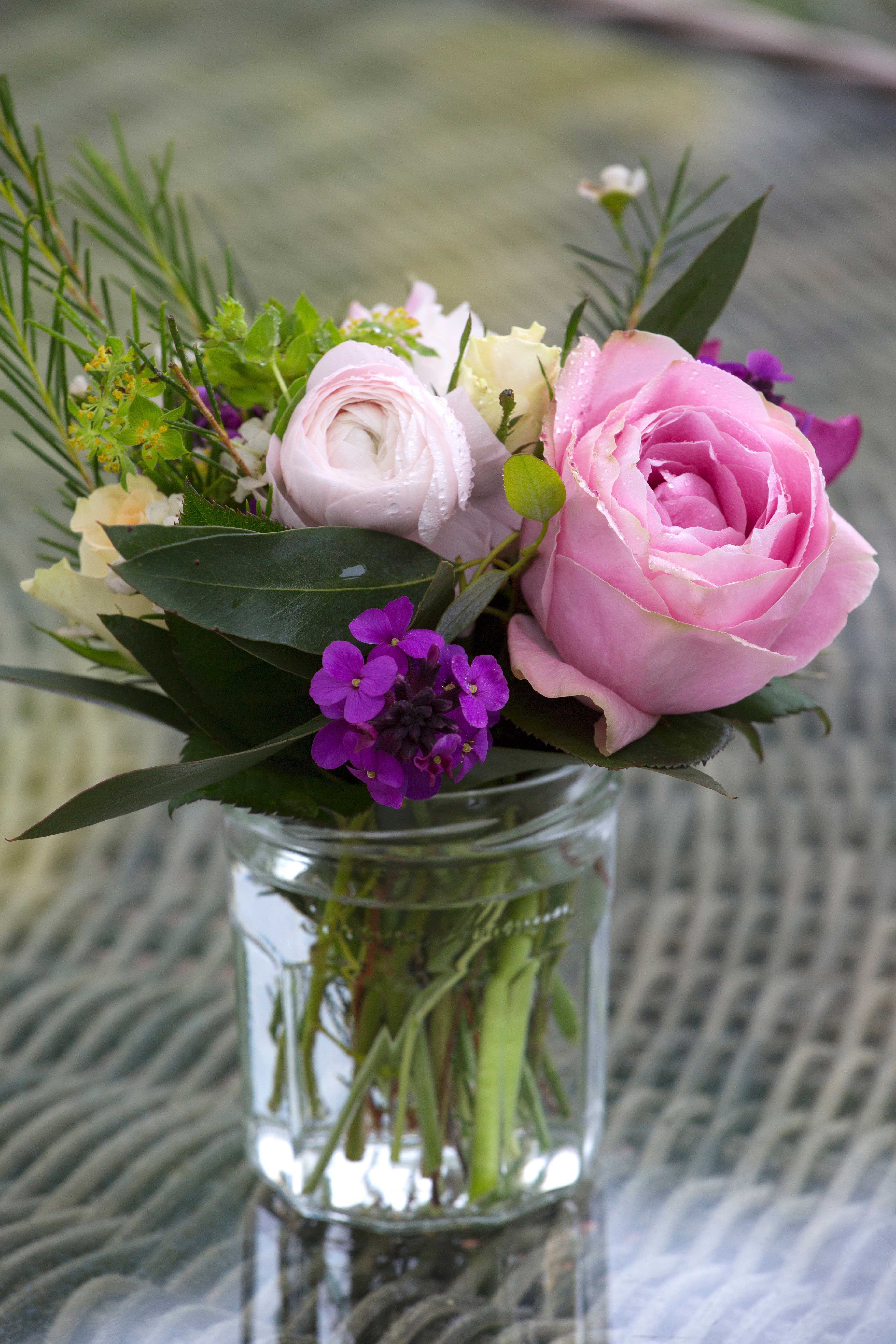
MORE FROM PERIOD LIVING

A subscription to Period Living provides you with all you need to know about caring for and improving a traditional garden – and also how to decorate, renovate and maintain a period home.
Colours are gentle and restful, with pretty vignettes of containers and plant associations drawing the eye. ‘Throughout May it’s a fragrant confection of gorgeousness,’ Eithne enthuses.
Rather than creating a dedicated cutting garden to serve her floristry work, Eithne decided to incorporate foliage and flowers to use among the medley of herbaceous and shrubs. ‘I went to Sarah Raven’s garden to learn all about cut-and-come-again planting, but when I looked at my garden, it was so fluid that I wanted to put things all over so as not to spoil the overall design.
‘You chance upon herbaceous choices and annuals dotted around, and I can collect armfuls, as there’s always something to cover any gaps. When I’m cutting shrubs, for example, I cut from the bottom as I’m always thinking about maintaining the look of the garden,’ she explains.
Colour themes are planned in the different areas. At the bottom of the garden, with its dense shade from towering pines, light is provided by splashes of white and cream: ‘Thalia’ and pheasant eye daffodils in spring, followed by Magnolia stellata and grandiflora, as well as philadelphus.
A rockery dominates the highest side, a known frost pocket; an existing small goldfish pond is adorned with lush foliage; a summerhouse and wooden swing seat beckon you to stop awhile; scented climbers scramble over arches and obelisks, and the whole garden has a calm and charming atmosphere.
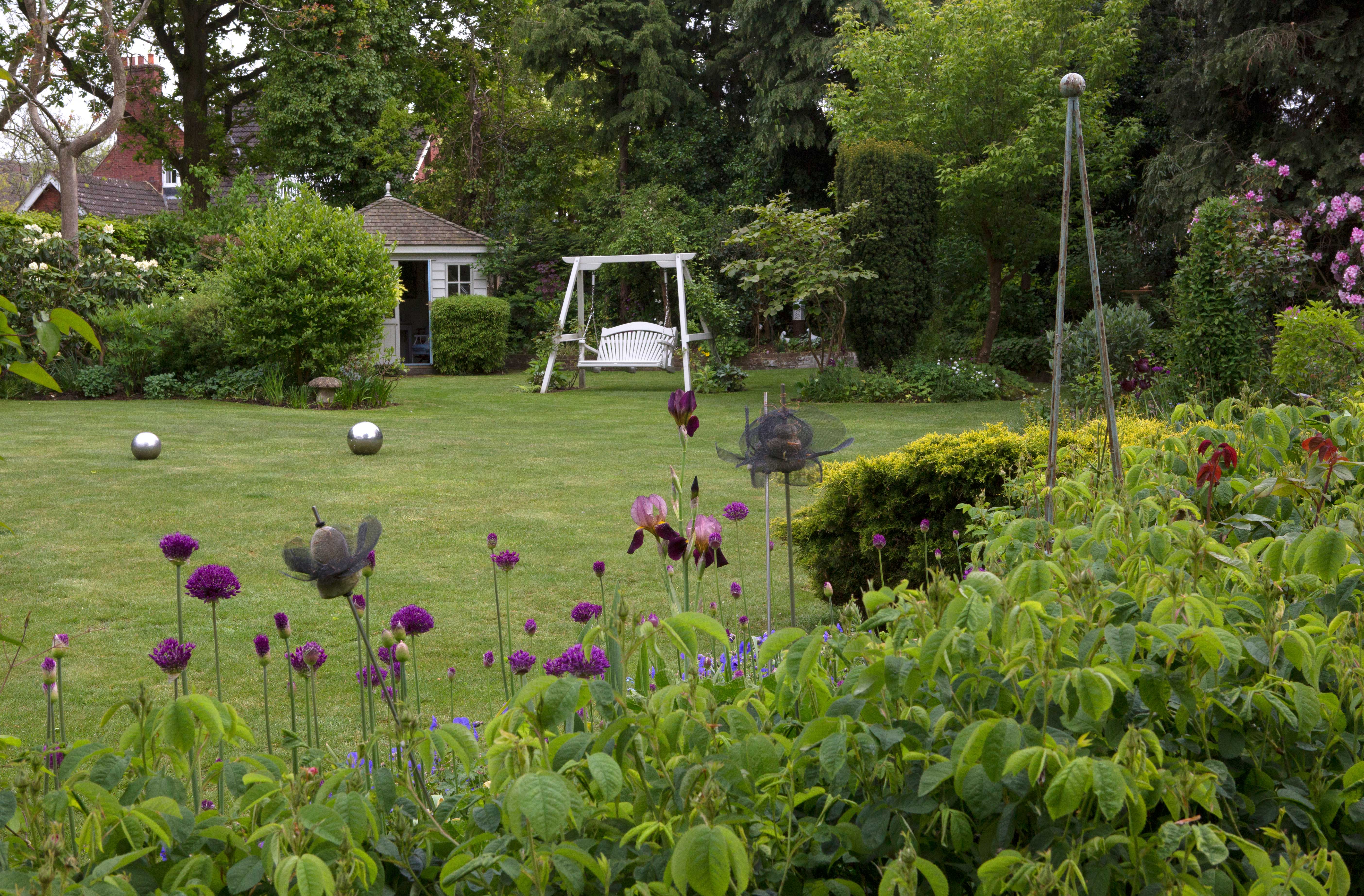
The swing seats invites you to stop and enjoy the tranquillity and vistas across the lawn of spheres of alliums and muted irises, including ‘Deputè Nomblot’, ‘Prudy’ and ‘Chinese Whisper’, popping up among the greenery
The grandchildren enjoy climbing the same trees their parents did, and sentiment guides many of the plant choices. ‘I always plant a rose for a significant event, including ‘William Lobb’ for my son, ‘Charlotte’ for my daughter, as well as ‘Jessica’ for my daughter Kate Jessica, as I couldn’t find a rose called Kate,’ Eithne explains.
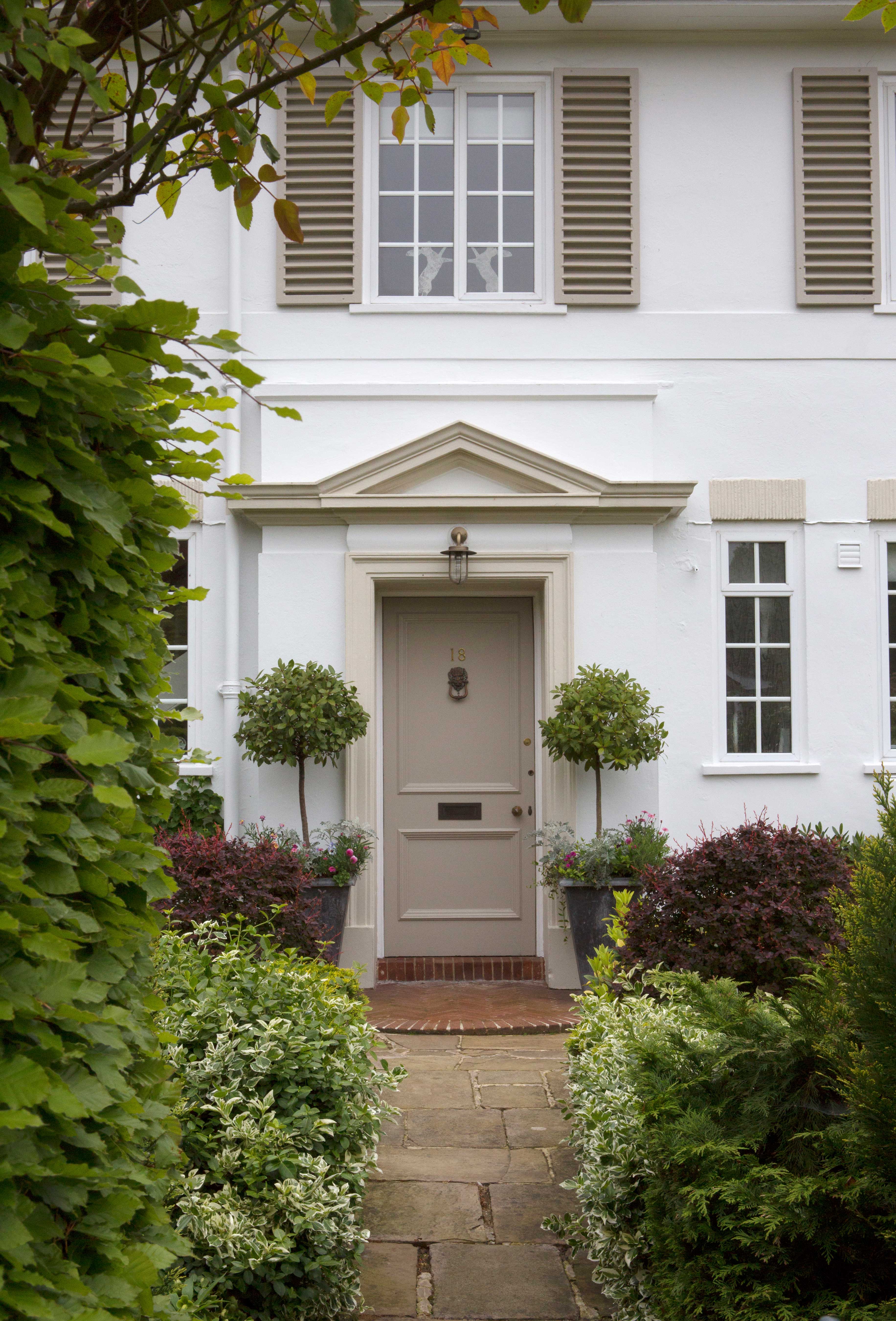
Sentinel standard bay trees underplanted with cineraria and annuals mark the front door, while the attractive foliage of Berberis thunbergii ‘Harlequin’ and variegated euonymus flank the path
‘However, it was a gorgeous hydrangea that I planted to mark my first grandchild, Annabelle’s, birth and then Rosa ‘Sophy’s Rose’ for my second granddaughter. For my granddaughter Ava, who had a difficult birth, I chose the climbing rose ‘Breath of Life’ as a pound for every sale of the rose went to the National College of Midwives,’ Eithne adds.
It is clear that this haven of calm from the bustle of life in Tunbridge Wells will continue to evolve lovingly under Eithne’s guidance.